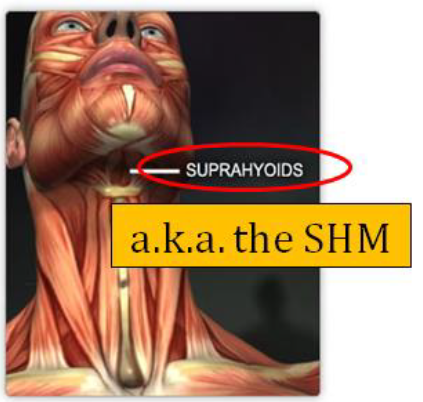Dysphagia Rehabilitation Training Device (DHT)
Oropharyngeal Dysphagia (OD) is a serious swallowing disorder that affects patients suffering from a wide range of diseases such as stroke, nasopharyngeal cancer, Parkinson’s Disease and ALS to name a few. It has been established that the suprahyoid Muscle (SHM) is the primary muscle group that control critical phases of swallowing, and patients with OD have been found to have weaker SHM strengths which in turn leads to weaker swallowing reflexes, thus leading to higher chances of aspiration (choking). If left unattended, OD can lead to a multitude of complications such as malnutrition, dehydration, aspiration pneumonia, and even death.


Current measures of overcoming OD involve either using electrical stimulation of the SHM groups through the use of an external stimulator or to strengthen the SHM groups via physical exercise. There is lack of evidence to suggest that there are long term benefits in overcoming OD through electrical stimulation and rehabilitating SHM groups remain the gold standard to helping patients restore their swallowing functions. However, such physical therapies, be it through Shaker’s Exercise or Chin Tuck Against Resistance (CTAR), are still prone to being performed wrongly, largely due to the difficult nature of the exercise inducing compensatory actions from the patients. Furthermore, there are limitations to track the progress of the patients which reduces the effectiveness of the said exercises. After an intensive scientific study of OD, first hand observation of OD therapeutic practices in hospitals and the critical evaluation of existing methods, the Dysphagia Rehabilitation Training (DRT) device was developed with the aim of strengthening the SHM via physical exercise in order to overcome OD.
The DRT employs 3 main principles to effectively achieve its goal. Firstly, it has an ergonomic mechanical design. The DRT ensures that the patient is performing the exercise correctly by comfortably fitting a wide range of physiques. This limits any compensatory actions and thus effectively targets and restores the strength of the SHM. Also, electronic biofeedback system allows the tracking of SHM training progress and downward chin forces instead of surface Electromyography (sEMG) which is currently used by clinicians for diagnosis. DRT also doubly ensures the effective targeting of the SHM group with little conscious effort by integrating a posture correction mechanism. A sound exercise protocol for DRT is currently in development. This feature is specifically tailored towards different patients with varying SHM strengths. By first establishing an individual’s baseline, targeted training for each individual can be catered for, rendering more effective therapeutic effects on the SHM.
To validate the DRT, a study involving 33 participants (DRT, Control and CTAR) was conducted in December 2015 to examine the muscle activity of three neck muscle groups: SHM, IHM and SCM group when using the DRT device over 6 weeks. RMS graphs for DRT isometric exercise showed that SHM group and ISM group’s activity is much greater than the SCM group’s activity. This data proves that DRT device effectively targets SHM and IHM group (both muscle groups involves swallowing) without involving so much of SCM group. At the same time, the ability of the DRT device to improve the strength of SHM group after training was also tested. The results show that the DRT group subjects show noticeable improvements in SHM strength after exercising with the DRT device with the prescribed protocol for 5 weeks.
Over the course of 3 years since conception from Aug 2013, the project has made several achievements, which include an Oral presentation at the 8th Asian-Pacific Conference on Biomechanics (Japan) that was held in Sapporo, Japan, from 16th to 19th September 2015; winning a National Health and Innovation Centre (NHIC) Innovation to Develop award with SGH in Aug 2015, winning a Silver Prize for oral presentation at the Bioengineering Society Scientific Meet (BES9SM) Conference held in Singapore (Hwa Chong Institution) in May 2015, and also a High Achievement award at the NUS Faculty of Engineering 30th Innovation and Research awards.
Contact Person: Soh Eng Keng
Email: engsek@nus.edu.sg
Tel: 66012290

